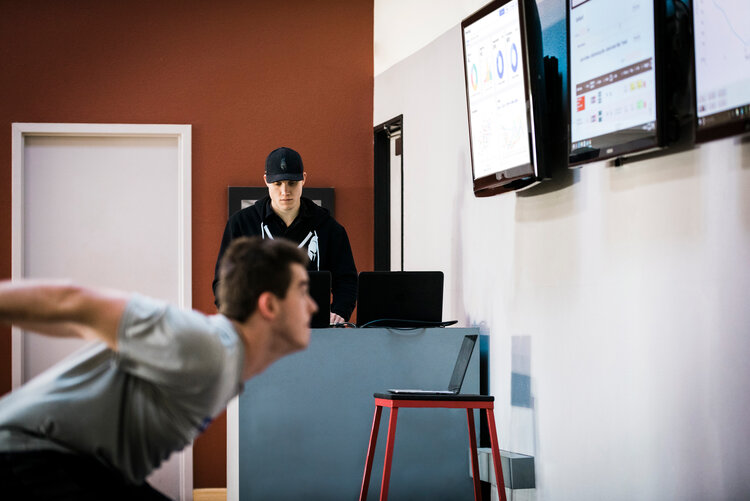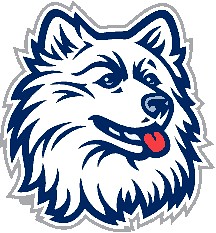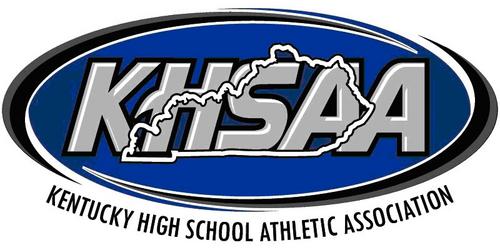Sparta Science Keeps Players Playing, Coaches Coaching
According to the National Athletic Trainers Association (NATA) as of June 2019, there are 45,000 members of the athletic training profession, and, according to the National Strength Coaches Association (NSCA), there are 40,000 certified strength and conditioning specialists in the world.
 With that high of a ratio of student-athletes to athletic trainers and strength coaches, it can be difficult to provide the type of individual care a student needs and those coaches expect to give. As student-athletes slip through the cracks of stretched-thin programs, typical pains and strains can give way to more serious injuries — which has a negative effect for everyone involved, but particularly the bottom line for money devoted to rehab, surgery, and recovery.
With that high of a ratio of student-athletes to athletic trainers and strength coaches, it can be difficult to provide the type of individual care a student needs and those coaches expect to give. As student-athletes slip through the cracks of stretched-thin programs, typical pains and strains can give way to more serious injuries — which has a negative effect for everyone involved, but particularly the bottom line for money devoted to rehab, surgery, and recovery.
At the professional ranks, teams spend a reported average of 22 percent of their total payroll on injured players. That’s a lot of money to be investing in athletes who are unable to perform.
But what if there was a solution to these problems — one that provided talent and injury risk identification, fatigue management and monitoring, performance enhancement and rehab efficiency, and cross-departmental communication? That’s where Sparta Science comes into the equation. The Sparta Science System with Force Plate Machine Learning is a customizable platform that seamlessly integrates into existing processes and systems. Its accuracy of insights to each individual analyzed improves with every scan, which allows each athletic program the ability to protect its most valuable assets — the athletes.
“What our platform provides is the complete solution from logging injuries in our management system to prescribing workouts to assessing on the Force Plate to providing our Dashboard to nutritionists,” Sparta’s CEO Phil Wagner said. “It’s really a full A-to-Z solution for every department within athletics.”
A simple self-serviceable two-minute scan per person uploads data to the cloud storage and analytics engine and displays instant results. The intelligent-learning modules improve injury risk and fitness predictions with every scan. From there, athletes, coaches, trainers, and nutritionists — pretty much anyone within the athletic program — can access the dashboard through a smartphone, tablet, or PC and track personalized workout plans built from the data and adjust accordingly. With all this data on your team at the tap of your fingertips, programs can identify trends for early corrective intervention by displaying team readiness over time. This instant feedback creates a metric-driven process, greatly improving the traditional, time-based approach.
Organizations from the Washington Professional Football Team and Pittsburgh Steelers to the Cal-Berkeley and the University of San Francisco to even the Air Force and Marine Corps have all incorporated Sparta and have been pleased with the results.
“These individual player profiles are then created and show us any asymmetries or imbalances the athlete may have. And we use that information year-round to create balance throughout our workouts and training programs so that we can, in return, create a more balanced athlete,” Torre Becton, former strength coach for Cal football, said.
 For the University of San Francisco, adding Sparta Science to its toolbox has not only meant keeping its student-athletes healthy, but also no longer breaking the bank on injury rehabilitation.
For the University of San Francisco, adding Sparta Science to its toolbox has not only meant keeping its student-athletes healthy, but also no longer breaking the bank on injury rehabilitation.
“When I got there the medical costs associated with the department were more than $400,000 per year. That’s what we were spending in response to our athlete’s injuries. Two years after implementing Sparta Science we actually average $80,000 per year in pure medical costs,” Scott Sidwell, USF’s former athletic director, said.
» ALSO SEE: Lack of Coaching Diversity Impacts College Students Decisions
Justin Leach, USF’s assistant athletic director of athletic performance, added, “It’s really allowed us to be objective with the information. It allows us more time to spend on the floor coaching and less time in the office programming. When we do the Sparta Scans with the Force Plate, the athletes are able to see what their movements look like and from there we can implement new workouts. I’ve seen our athletes take more of an ownership role over the program.”
On the other side of the country, Stacy Carone, ATC, CSCS, and associate athletic director for sports medicine at the University of Maryland-Baltimore County, agreed with Leach’s assessment of Sparta.
“Our injury rates our first year or so — our average days lost went from 16 to three, which was a remarkable way for me to say to our AD, ‘Hey, we can do more of this. We’re just scratching the surface,’” Carone said.







